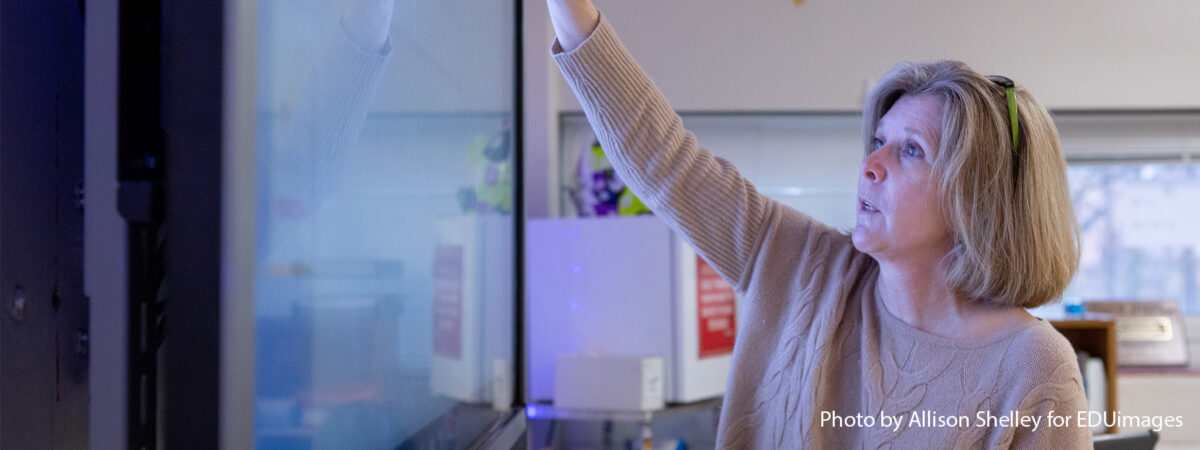
Justin Desai and his colleagues at The Calculus Project began their work as grantees of the Bill & Melinda Gates Foundation’s K-12 AI Pilot with a simple question: How can artificial intelligence (AI) support the work of teachers? “We found that the teacher who was the most effective using AI was the most experienced teacher, had the best relationship with his students, was the most calm and was running a solid classroom,” recalls Desai, The Calculus Project’s director of school and district support and a former math teacher.
In The Calculus Project’s pilot project, teachers who had the most success using AI to advance student thinking integrated AI tools into carefully planned lessons that built on their existing competencies in the classroom. In other words, they found that AI held promise in the hands of good teachers.
Respectively, we work at Teaching Lab, the Research Partnership for Professional Learning (RPPL), and The Calculus Project, three projects that participated in the Gates Foundation’s K-12 AI Pilot Cohort. Our work shows that researchers, developers, and school communities need to stop thinking about AI “solutions” to educational challenges. Instead, they need to consider how AI can help respond to teachers’ pain points more effectively and equitably—and when it’s not the best fit.
We offer three tips for researchers, schools, districts, developers, and educators on how to put teachers at the center of using AI in teaching and learning:
Where it exists at all, professional learning about AI often focuses on how educators can use AI-based tools in particular tasks. For example, teachers might learn to use ChatGPT to generate lesson plans or to compose feedback on student writing. But across our projects, we saw a far greater need to focus professional learning on how GenAI systems work and to encourage teachers to explore this subject with students in the classroom.
RPPL’s pilot project involved interviewing teachers to develop a landscape analysis of AI in professional learning. Those interviews revealed that educators often perceive GenAI as a black box, leading to challenges in prompting or identifying inaccuracies or bias in the outputs generated. Lack of AI literacy can hinder a teacher’s ability to effectively integrate AI tools into their teaching practices, or for a school or district to offer meaningful professional learning opportunities around AI.
For example, The Calculus Project found that teachers were often disappointed with the quality and accuracy of answer keys and problem sets created by ChatGPT. When teachers better understand how AI works and the data that the model is trained on, they are better able to prompt the system and determine when and how to use AI systems. Professional learning that focuses on how AI works in general also helps teachers teach students about what AI can do— and what its limits are.
All three of our pilot projects demonstrated that it’s important for AI work in education to respond to teachers’ needs. The interviews that RPPL conducted with teachers pointed to significant challenges that educators face in using AI tools within their schools. Schools often lacked digital devices or had poor internet connectivity. District policies were sometimes unclear about or openly resistant to the use of AI tools. Some teachers distrusted the still-emerging technology. Tools and recommended approaches need to respond to these particular conditions. For example, Teaching Lab’s pilot project to co-create AI-based tools with teachers highlighted the need to align tools to the academic standards and curricula that teachers used.
All of our pilot projects underscored the importance of professional learning opportunities that recognize the unique needs and context of individual teachers. That might mean offering educators with less experience a chance to practice using AI tools in low-stakes environments such as professional learning communities. It could also mean empowering more proficient teachers with opportunities to lead professional learning communities for their peers. For their part, edtech developers need to actively engage teachers from different types of schools, serving different populations and varying levels of resources as they develop new tools.
As we worked on our pilot projects, we were all struck by a similar insight: There are no true experts of AI in education. This is an emergent field, and it is important that we involve and build bridges between different areas of expertise as we determine which approaches work best. Crucially, we need to establish co-creation spaces that leverage the expertise of researchers in AI and education, while also drawing on the unique needs and contexts of educators.
Teaching Lab’s pilot project served as such a space, producing a variety of curriculum-aligned tools that individual teachers found useful in their particular contexts or that could be customized for different contexts. Using their R&D platform, Teachinglab.ai, Teaching Lab tested a variety of math tools with dozens of educators. They then employed user feedback to create two different products: one Chrome extension that teachers can use to modify math curricula to make it more usable and customized for their students and another that embeds modified curricula directly into a Google Doc that teachers can pick up and use. They are testing these two products in their math coaching partnerships now and into the next school year.
We recognize scaling such co-creation processes comes with significant challenges. Co-creation is time- and resource-intensive. As a field, we need stronger research and development infrastructure to guide development. Further, we need to develop evaluation measures and benchmarks to assess the quality of AI tools. Despite the challenges, partnering with teachers holds enormous potential. As we encourage educators to embrace AI tools, we should also provide more opportunities for them to build alongside us.
Be on the lookout for Digital Promise’s full report on the K-12 AI Pilot Cohort, to be published in October.
Want to know more about centering teachers in AI innovation? Find more resources here: